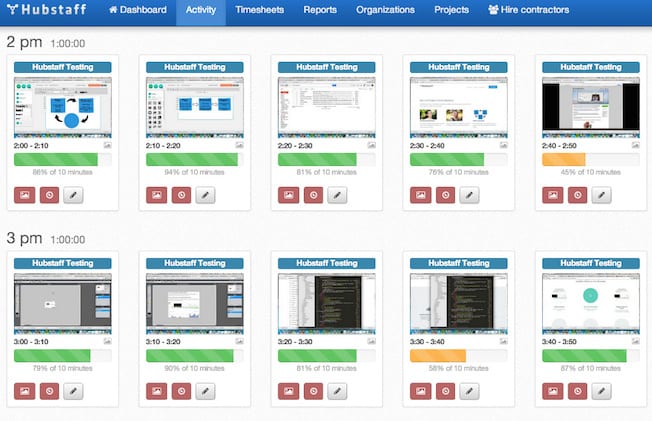As a small business, getting intentional about your marketing solutions is necessary to capture the attention of your target audience and grow within your community and beyond. Usually, the word “marketing” can sound like big dollar signs, something you may not have as a small business. This is a misconception — as the popularity of digital marketing and social media has exploded in recent years, so have your options for low-cost marketing solutions. Here are five of our favorite go-to marketing tools that small businesses should explore.
Social Media Marketing
It will soon be 2020 and if your small business isn’t discoverable on major social media sites, you’re missing out some major potential for lead generation. One of the best things about social media is that it spans beyond geographic location so you aren’t limited to the customers within your community. International expansion is suddenly possible and at a low cost. Social media channels are a great way to build brand awareness and reach your target audience. The platforms you should be taking advantage of are Instagram, Twitter, Facebook, LinkedIn, YouTube, and Pinterest, to name a few of our favorites. The reality is that if your business isn’t using your target customers’ preferred social platform, there’s no doubt that they’ll discover a competitor who is.
Although it’s important to have a presence on all social platforms, your best bet is to decide which one your target customer base is using most and initially invest your time and resources there.
Partnerships
Forming partnerships with businesses related to yours is an incredible way to get your name out there. Think about it: your business has the opportunity to double the reach of the campaign or event you’re promoting and acquire new customers in the process. When considering which small business you want to partner with, remember to choose someone who’s related to your industry but is not your direct competitor.
Not sure what to create through this partnership? Consider merging your businesses through co-planning an event, collaborating on a giveaway, or working together on some form of content marketing.
Content Marketing
Speaking of content marketing, we’re here to break it down once and for all. Content marketing requires producing and creating relevant content to engage your audience and drive potential customers to your website. Some of my favorite examples of content marketing are blog and video content. The idea is that by providing value to your customers outside of the product itself, you develop a reputation as a trustworthy source which will convince current customers to stick by you and potential customers to grow interested in what you’re all about.
If your small business doesn’t already have a blog, it’s time to put on your writer’s cap. Consider which topics your target audience might find interesting or valuable, do your research, and stay consistent with the quality of content you put out there. This is your chance to showcase your knowledge on the industry you’re in, so make sure to write about something you feel passionate about—there’s no doubt that this is something the reader will pick up on.
Video content is growing in popularity as seen through social media users’ engagement with YouTube, Vimeo, Snapchat, and Instagram stories/TV, amongst many others. Something we love about video content is it’s shareable — as long as you’re making quality content and reaching your target audience, it will inevitably grow and catch the attention of your future customers.
Influencers
Jumping into the world of influencers is a deep dive, especially if you’re working on getting your social media platforms up and running and planning consistent content to share with your target audience. Influencer marketing is similar to celebrity endorsements; however, the celebrities are recognizable through social media and the endorsement is a partnership between the brand and the influencer. Influencers don’t need to hold celebrity status — a big thing that helps get you started with influencer marketing is that influencers are simply anyone with influence — they just vary in their popularity which is measured by their follower count.
Here’s a breakdown of the different levels of influencers:
Nano-influencer: 1,000 – 10,000 followers.
Micro-influencer: 10,000 – 50,000 followers.
Mid-tier influencer: 50,000 – 500,000 followers.
Macro-influencer: 500,000 – 1 million followers.
Mega-influencer: 1M+ followers.
As a small business with an interest in keeping costs low, nano- and micro-influencers are a great place to start. Micro-influencers are often far cheaper than mid-tier and macro-influencers (meaning great value for your dollar) while also having high-engagement on their pages.
To find influencers to work with, take some time to dig through the hashtags relevant to your business and make a list of people you’d like to work with. If you have the option of reaching out through email, this is your best bet as sometimes direct messages can get lost in an inbox.
Ambassadors
Ambassadors are individuals who promote your business, either because they’re being paid, recruited, or volunteering. If you’re looking for brand ambassadors, first consider who your loyal customers are. These people are your bread and butter and, as individuals already loyal to the brand, you know they’re going to support you and share what you’re all about. One tidbit to keep in mind — make sure your ambassadors are chosen strategically to appeal to a specific audience. This will support your business growing in the intended direction and keeps you on track to appeal to your target audience.
Last Thoughts
One thing that we want to leave you with: don’t try to do everything at once. Out of the marketing solutions we’ve offered here, pick one that speaks to you the most and start there. Always keep content quality at the top of your mind and use the support of industry experts to refine and craft your strategy. Bringing success to your small business isn’t a sprint, it’s a marathon.

